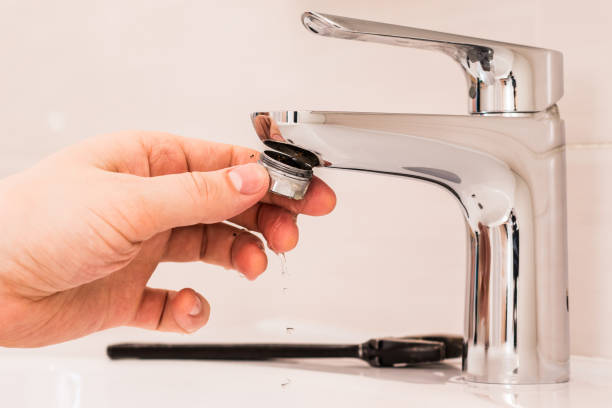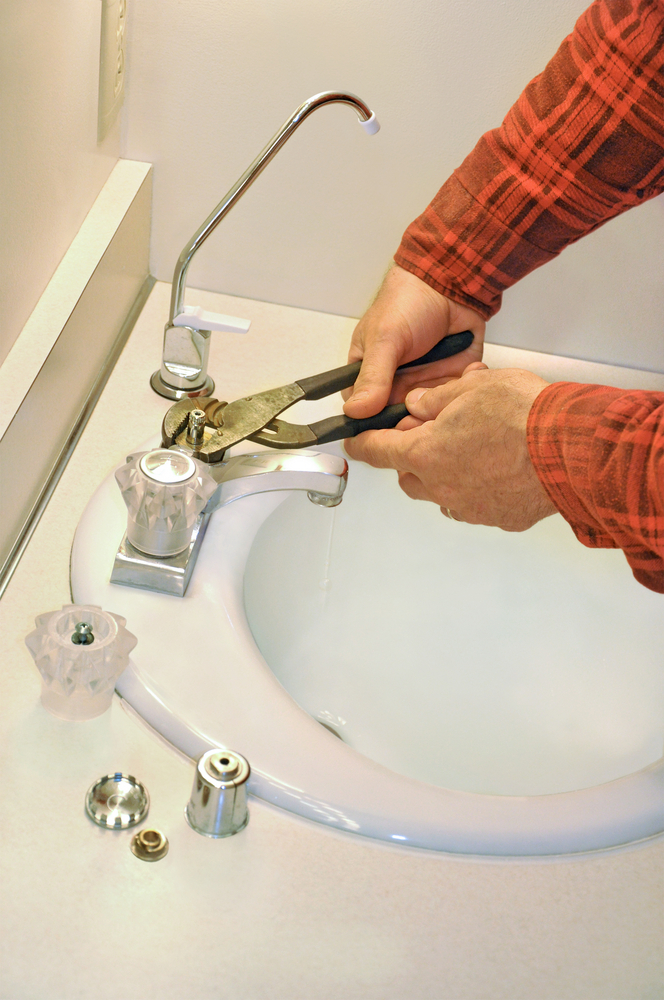We've found this great article about Why Is It Important To Fix Your Leaking Tap/Faucet? listed below on the net and figured it made good sense to write about it with you on this site.

Leaking taps may look like a minor hassle, but their influence exceeds simply the aggravation of the noise. From wasting water to sustaining unnecessary economic expenses and wellness threats, disregarding a leaking tap can bring about different repercussions. In this short article, we'll explore why it's important to address this common household concern immediately and properly.
Waste of Water
Environmental Influence
Leaking faucets add substantially to water wastage. According to the Epa (EPA), a single tap trickling at one drip per second can throw away greater than 3,000 gallons of water each year. This not just pressures water resources yet also influences ecosystems and wildlife based on them.
Financial Prices
Boosted Water Costs
Past the ecological influence, trickling taps can inflate water bills significantly. The gathered wastefulness over time translates right into greater energy expenditures, which can have been avoided with prompt repair work.
Potential Residential Property Damages
Additionally, extended leaking can result in damage to components and surfaces surrounding the tap. Water build-up can trigger staining, deterioration, and also structural issues if left neglected, leading to additional repair work expenses.
Health Problems
Mold and Mold Growth
The consistent existence of moisture from a trickling faucet produces an optimal environment for mold and mold development. These fungis not only endanger indoor air high quality yet also present wellness risks, particularly for individuals with breathing problems or allergic reactions.
Waterborne Conditions
Stagnant water in trickling faucets can become a breeding place for germs and various other pathogens, enhancing the threat of waterborne illness. Contaminants such as Legionella germs thrive in stagnant water, possibly bring about significant diseases when ingested or breathed in.
DIY vs. Professional Fixing
Pros and Cons of Do It Yourself Repair Service
While some may try to deal with a dripping tap themselves, DIY fixings include their very own collection of obstacles. Without appropriate expertise and tools, do it yourself efforts can intensify the concern or lead to insufficient fixings, prolonging the issue.
Advantages of Working With a Professional Plumber
Employing a professional plumber ensures that the underlying cause of the trickling tap is attended to effectively. Plumbing technicians have the proficiency and equipment to detect and repair faucet problems efficiently, conserving time and minimizing the risk of more damages.
Step-by-Step Overview to Dealing With a Dripping Tap
Devices Needed
Before trying to repair a trickling faucet, gather the needed tools, including an adjustable wrench, screwdrivers, substitute components (such as washing machines or cartridges), and plumber's tape.
Usual Faucet Issues and Their Solutions
Identify the type of tap and the particular issue creating the drip. Typical problems consist of worn-out washing machines, corroded valve seats, or faulty O-rings. Describe producer guidelines or on the internet tutorials for detailed guidance on repair work.
Preventive Measures
Regular Maintenance Tips
To prevent dripping faucets, execute routine maintenance such as cleaning up aerators, evaluating for leaks, and changing damaged components promptly. Furthermore, take into consideration installing water-saving tools or upgrading to much more efficient fixtures.
Importance of Prompt Repairs
Dealing with dripping faucets as quickly as they're seen protects against additional water waste and potential damages, eventually saving both water and cash in the future.
Effect On Property Worth
Understanding of Well-Maintained Home
Keeping a property in good condition, including resolving upkeep problems like dripping taps, boosts its viewed value and charm among possible buyers or occupants.
Impact on Resale Value
Characteristics with well-kept plumbing fixtures, consisting of taps, command higher resale values in the realty market. Resolving leaking taps can add to a favorable impression during property evaluations and settlements.
Environmental Obligation
Individual Contribution to Conservation
Taking duty for fixing trickling taps lines up with wider efforts towards water preservation and environmental sustainability. Every individual's activities collectively make a substantial effect on preserving priceless sources.
Lasting Living Practices
By prioritizing timely repair work and taking on water-saving routines, individuals contribute to lasting living methods that profit both present and future generations.
Verdict
Dealing with a trickling faucet surpasses mere comfort; it's an important action towards conserving water, minimizing economic prices, and protecting wellness and home. Whether with DIY repair work or expert help, doing something about it to fix dripping faucets is a small yet impactful way to advertise liable stewardship of sources and add to a much healthier, a lot more sustainable future.
Why Are My Faucets Dripping (And Can I Fix it Myself)?
Causes of a Dripping or Leaking Faucet
Whether you’re hearing drops of water falling and hitting a sink, or noticing water ooze out from the base of the spout, you shouldn’t ignore a dripping or leaking faucet. And, the good news is, sometimes you can fix the problem yourself.
In this article, we’ll review a few common causes of dripping and leaky. We’ll also walk you through some basic ways to find the problem and handle it without calling anyone — and let you know when to call in a pro.
But, no matter what the cause, or whether you can handle it on your own, the sooner you address it, the better.
Each drip may be a tiny amount of water. But, they all add up quickly. According to the U.S. Geological Survey, one faucet losing one drop every 20 seconds — five a minute — wastes around a liter of water every day, and 173 gallons a year.
Add in more than one in your house, and it’s a lot of water to waste. So, we’ll help you get to the bottom of things quickly.
Four Reasons Your Faucet May Be Dripping
Aerator is Damaged or Unseated Valve Seat is Corroded O Ring is Loose or Worn Out Part of the Assembly is Loose Aerator is Damaged or Unseated
If you unscrew the end of your faucet, you’ll find the aerator. It’s the little stem piece with a screen on it that shuts off the water circulation.
If it’s damaged, or if it’s not sitting right, it will allow water to pass through.
Valve Seat is Corroded
Next is the valve seat, which is connected to the washer. If the washer wasn’t in place correctly, then it could have ground against the seat. Over time, this damages the valve seat.
The problem could also be corrosion: Over time, the part has worn out, and it’s now allowing water to pass through.
O Ring is Loose or Worn Out
Since the o ring is only a small rubber gasket, it’s a common reason why the faucet is dripping. You’ll find it at the base of the faucet, and it’s there to keep water from coming out where it’s not supposed to.
However, it’s common for the o ring to wear out over time. When it does, you’ll notice a drip.
Part of the Assembly is Loose
So far, we’ve looked at a few small, specific parts. But, the problem could be anywhere in the assembly if something’s out of place.
Even if a part isn’t damaged, over time, it may have become loose or dislodged. It could be the parts we mentioned, or the aerator at the tip of the faucet, the stem itself,
Can I Fix a Leaky Faucet Myself?
Depending on the problem, and how handy you are, there’s a chance you can fix a leaky faucet without calling a professional. But, you do run the risk of making the problem worse.
If it’s a small drip, you can certainly try a few troubleshooting tactics. We’ll walk you through them in a moment.
But, no matter what, your first step should be shutting off the water coming into the faucet. You should find a shutoff valve under the sink on the pipes leading to it. Turn each one clockwise until they close tightly.
Next, make sure you have the right tools for whatever you’re attempting. It’s tempting to make do with what you have. But, you need the right ones for a reason: You’re often dealing with small parts that can break if you handle them carelessly.
If you’re feeling confident, here are some places to start.
Items Near the Tip of the Faucet
A few of the parts we mentioned — particularly the valve seat and washer — are located at the tip of the faucet where the water comes out. They’re easy to access, making it a good place to start.
Check the O Ring
To check the o ring, you’ll need to take off the spout at the base. It’s easiest on kitchen sinks with long spouts, versus the smaller, bulkier base on most bathroom sinks.
Either way, this can be tricky, so do it carefully and don’t force anything. If it’s not coming right off, you’re much better off calling in a pro than possibly breaking something.
For a kitchen sink, there’s usually a nut or coupling assembly at the base of the spout. These often slide off easily without using any tools.
Once you’ve disassembled those parts, gently but forcefully twist off the spout.
Then, you can see the o rings. There should be two of the rubber gaskets on the base. If they look worn or damaged, replace them, and see if that solves the problem.

Hopefully you liked our part on Why Is It Important To Fix Your Leaking Tap/Faucet?. Thanks a lot for taking a few minutes to browse our blog post. Are you aware of someone else who is inquisitive about the topic? Feel free to share it. Thanks a lot for taking the time to read it.